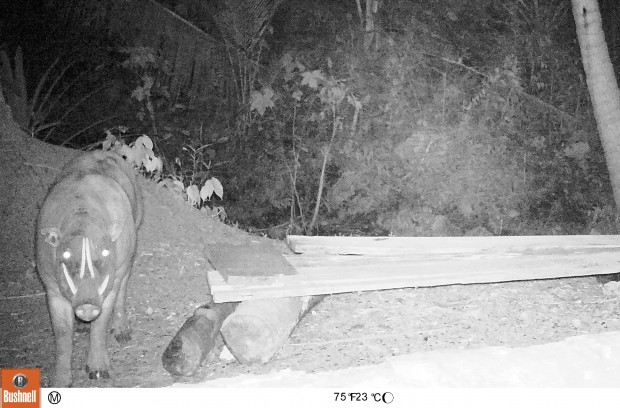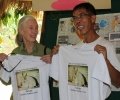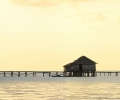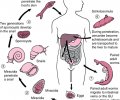Project Update 2019
TRAILS
In the first half of 2019 I did not spend much time in the forest due to the preparation of eye treatment in Germany and being in Jakarta and Germany for around three months. On returning I re-cleared the bird valley and the covered trails of its creek and hung a bamboo ladder on Pretty, the strangle fig. The valley is ready for bird watching and night trekking.
The trail to Wow! fig tree had not been passable in some spots because of fallen big trees and invading thorn trees, but clearing them did not take much time, just three weeks. Then I focused on the babirusa valley. It was totally closed by the bush and thorn trees I cut a year before. Re-opening it is a backbone-breaking and wrist-pain effort, and bloody too from the punctures of the palm trees spikes—up to 12 cm thorns. However, the valley is good now; 10 wallowing pools of babirusa are ready for babirusa watching.
While the prolonged drought—four months with no rain—made my work easier in the forest, it caused suffering to both animals and us. The animals were difficult to see; they might have moved to the areas unknown to me in the western part of Malenge. And, for the first time in five years, we had to buy bottled water for drinking because all rainwater containers were empty. Luckily the rain has started to fall two weeks ago.
Babirusa
For five years I have tried to take photo of babirusa but been to no avail. They are too elusive; I have never seen them longer than five seconds and closer than ten meters. Now I can watch them in action as long as I like in less than three meters from inside our house! Thanks to Andreas Becker, a German tourist who kindly brought me two units of camera traps.
I started the trap trial at home by luring babirusa with coconut—not banana—split. Every day I peel 2 – 4 coconuts and split it into two and put them on a table at the back of our yard. It works. The camera recorded a babirusa—we have named it Chocho—but the videos show it doesn’t eat the coconuts on the table; it takes them one by one and eats them under the pandanus plants. I moved one camera to focus on the eating place. It recorded Chocho eating coco but then he ate in other places where recording was more difficult to do.
As we want to watch Chocho alive, I put the coconuts closer and closer to our house. It works very well. Not only we get better videos with clear form and movement of it—we even notice that its right ear lobe torn, probably from fighting with other babirusa—we also look at each other: it at the yard, we inside by the window.
While the videos are excellent, the still images are terrible. All of them are too bright from over-exposed no matter the camera setting. The other major problem is the lack of viewfinder; I often miss the focus, aiming either too low or too high or to the left or right of the action spot. I need better cameras but must wait until someone or funder rewards me a grant. I paid the cameras 200 Euros with the money granted by the Primate Conservation Inc. Thanks Noel for this valuable donation.
Tarsius Watching Shelters
I have cleared the forest above my hill garden from the undergrowth and small trees so that we can see clearly and walk under the big trees. And I have also constructed a bench from rough woods; it hangs two meters above the ground, tied to four trees; above it, I hang a hammock tied to two trees at both ends. It is wonderful to lie down in the hammock watching starry sky and full moon behind the canopies. The best is it is only 200 meters from our house so that I can spend the night in the forest and go home if it rains heavily. This spot is ideal for tarsier watching—confirmed with the call recording I have done—in the night.
There are some tall trees at the top of our hill garden. I have connected two trees growing side by side with wooden sticks from the ground to 12 meters up: a ladder. It is a very hard work for an old man like me. I had to bend my back for minutes while tying or nailing. But I am happy with the result of one-week work. Now I can see the wide horizon above the blue ocean dotted with green clusters of coral reefs; and the shadow of mountains on the mainland Sulawesi is very clear far far away.
Wildlife Sanctuary
With the money from my brother Atang Suhardi I have bought a land 300 meters east of our home. It is about 4 hectares and has more than 400 coconut trees. The land has a complete ecosystem; from the sea to the hill, it consists of deep sea more than 100 meters, coral reefs, sea kelps, muddy shore, sand mixed cobble beach, mangrove in the lagoon, and forest. For these properties, I plan to set it up as a sanctuary for the babirusa, macaque, tarsier, cuscus, birds, and even crocodile. If more fund available, I will set up more sanctuaries on the island.





